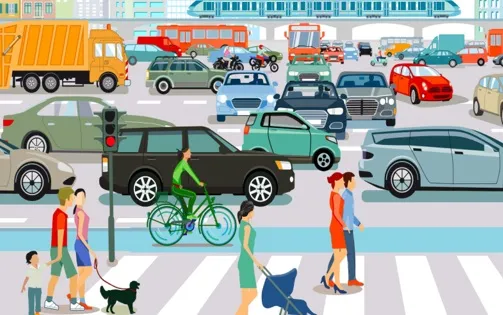
The latest version of Systra’s microsimulation modelling software Paramics Discovery 26 includes active travel modes for the first time.
This cyclist modelling and pedestrian visualisation capability means the Paramics transport planning software tool now "has improved functionality to simulate behaviour across more modes of transport to better reflect how we use our road infrastructure", the firm explains.
After two years in development, Paramics Discovery 26 "can be used to test a wide variety of transport planning interventions simply and quickly, including assessing the impact of increased traffic on a road network, new junctions and infrastructure, changes to traffic signal control, public transport operations, roadworks and event planning".
Economic and environmental impact of creating active travel infrastructure can be measured. "As towns and cities throughout the globe are witnessing a massive return on investment by dedicating more road space to active travel modes, our improved software will for the first time allow authorities to envisage thriving local economies and test how best to reach their carbon reduction targets," said Systra digital director Malcolm Calvert.
Sébastien Dupont, Systra MD Consultancy, says: “We listened to our clients, colleagues and authorities around the globe who expressed a strong interest for sustainable transport modes to help their detailed transport planning and appraisal programmes. With Paramics Discovery 26 we have equipped authorities with an intelligent tool to support the transition to Net Zero.”










